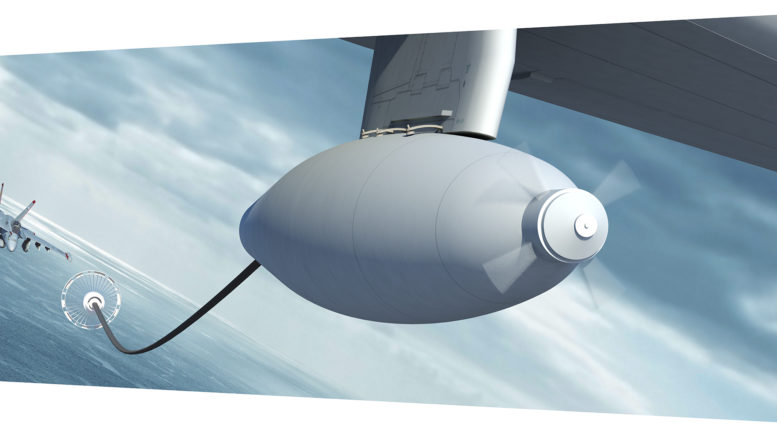
ARLINGTON, Va. — The Navy’s latest revised list of requirements for its carrier-based unmanned aerial tanker will likely push all four competitors to redesign their bids, the head of Lockheed Martin’s Skunk Work division said on Tuesday.
The Navy’s latest direction for the MQ-25A Stingray would further minimize information, reconnaissance and surveillance (ISR) requirements for the airframe and further reduce strike as a mission, Rob Weiss, the head of the company’s internal aviation research and development arm, said at Lockheed Martin’s annual media day.
“The Navy came out with these requirements perhaps in the last six to eight months, and they still haven’t given us the final system requirements document – that should be coming any day – with specifically what they want this tanker to do,” Weiss said.
“From our viewpoint, the requirements, as they are currently unfolding, are going to require a new design from all of the competitors. It’s now very tanker-focused. We’re looking at what those requirements are, there will probably be a follow-up capability – some ISR it could do and potentially some strike – but it’s very much focused on tanking.”
Along with Lockheed Martin, Northrop Grumman, General Atomics and Boeing are competing for the first operational carrier-based unmanned aerial vehicle.
As part of his presentation, Weiss teased an image of Lockheed Martin concept that showed a view of a wing with an aerial refueling tank hanging from a pylon and trailing a probe-and-drogue fuel line to an F/A-18E Super Hornet.
Currently, the Navy refuels its carrier aircraft with its Super Hornet fleet. The tanking mission accounts from anywhere from 25 to 30 percent of Super Hornet sorties, further exacerbating the ongoing tactical aviation shortfalls in the service.
That demand – in part – is pushing the Navy to get a tanking UAV into service as soon as possible rather than creating a more multi-mission platform, USNI News understands.
“If the requirements were about penetrating ISR in contested airspace – be it ISR or strike – you would need an airplane that looks different than the concept you’ve got up there with pylons and so forth doing tanking,” he said.
Last year, Weiss suggested the Navy pursue a more stealthy tailless flying wing design that could be adapted to higher-end missions later.
“If you start with a vehicle shape that will allow it to penetrate into a contested environment, you can get a low-cost tanking capability upfront without putting all the capability into that vehicle. … You can do it at low cost but stay on that same path to use that vehicle design to operate in a penetrating environment,” Weiss said in 2016.
Later last year, Commander of Naval Air Forces Vice Adm. Mike Shoemaker said industry was struggling with designs that could blend the requirements of an ISR platform and a tanker. The Air Boss said the two missions lent themselves to two different types of platforms.
A primarily-ISR UAV would be a high-endurance platform that would “probably not carry a lot of fuel, have a large wingspan,” to be an efficient platform, Shoemaker said in August.
“If you’re going to be a tanker at range, you’re obliviously going to have to be able to carry a fair amount of fuel internal to the platform. … That drives the different design for those two. So the industry is working on an analysis of where that sweet spot is to do both of those missions.”
However, based on Weiss’s comments, the Navy’s latest revision to the requirements seem to push all the competitors to a wing-body-tail design for Stingray rather than the flying wing concept both Lockheed and Northrop were thought to be developing for the MQ-25A program.
“The requirements have been defined to be a tanker, so you really don’t want to go with a tailless design if your primary requirement is associated tanking,” he said.
General Atomics and Boeing both have proposed wing-body-tail for their MQ-25A proposal in the past, USNI News understands.
Following a draft Request for Proposal issued last year directly to the four competitors, the Navy is expected to issue the final RFP this summer, with an expected contract award in 2018, Weiss said.
The MQ-25A is the Navy’s follow-up program to the service’s Unmanned Carrier Launched Surveillance and Strike (UCLASS) UAV program that developed an aircraft primarily for ISR. However, the program was restructured following a 2015 Office of Secretary of Defense review led by Deputy Defense Secretary Bob Work, and it became a tanking-first concept that became MQ-25A.
While the four competitors are developing the airframe, the Navy is developing the ground control station and the data link packages for the MQ-25A that remain largely unchanged from the UCLASS program.





